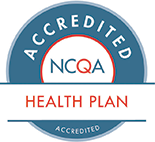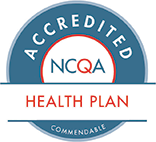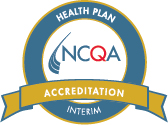Cholecystectomy (removal of your gall bladder)
Know your options—a guide to minimally invasive procedures (MIP) for cholecystectomy
What is a cholecystectomy?
Cholecystectomy is a surgical procedure to remove your gallbladder—a pear-shaped organ that sits just below your liver on the upper right side of your abdomen. Your gallbladder collects and stores bile—a digestive fluid produced in your liver.
When is a cholecystectomy needed?
Cholecystectomy may be necessary if you experience pain from gallstones that block the flow of bile. Cholecystectomy is a common surgery and it carries only a small risk of complications. In most cases, you can go home the same day of your cholecystectomy.
Cholecystectomy is most commonly performed using a tiny video camera to see inside your abdomen and special surgical tools to remove the gallbladder. Doctors call this laparoscopic cholecystectomy.
Know your options: MIP for a cholecystectomy
In gallbladder removal surgery, a surgeon makes a large incision (cut) in your belly to open it up and see the area. The surgeon then removes your gallbladder by reaching in through the incision and gently lifting it out. Surgery is done while you are under general anesthesia (unconscious and unable to feel pain).
The surgeon will make a 5 to 7 inch incision in the upper right part of your belly, just below your ribs. The surgeon will cut the bile duct and blood vessels that lead to the gallbladder. Then your gallbladder will be removed.
Minimally invasive cholecystectomy is the standard of care for surgery to remove the gallbladder when it is inflamed, blocked or filled with gallstones. Demand for this form of surgery has escalated to the point where nearly 90 percent of all operations to remove the gall bladder are performed using MIP techniques. The laparoscope is put into your body through a tiny cut made just below your navel. Your doctor can then see your gallbladder on a TV screen and do the surgery with tools inserted in three other small cuts made in the right upper part of your abdomen. Your gallbladder is then taken out through one of the incisions.
How does MIP for a cholecystectomy work?
| Open colon cholecystectomy | Minimally invasive cholecystectomy |
|---|---|
|
|
Know the risks of cholecystectomy
As with any surgical procedure, there are risks that accompany open and laparoscopic colon surgery. This is why it is important to weigh the benefits of the surgery against the risks.
Complications are rare but may include bleeding, infection and injury to the duct (tube) that carries bile from your gallbladder to your stomach. Also, during laparoscopic cholecystectomy, the intestines or major blood vessels may be injured when the instruments are inserted into the abdomen. Remember, all of these complications are rare.
Talk to your doctor
Patients interested in minimally invasive colon surgery for colon cancer should find a surgeon who is experienced in minimally invasive colon surgery. Following is a list of questions you should discuss with your surgeon to determine whether he/she is qualified to perform the procedure and if you are a likely candidate for this type of surgery.
- Do you perform minimally invasive colon surgery?
- Are you board certified? Which board? Which state? (Surgeons should be certified by a national surgical board approved by the American Board of Medical Specialties.)
- How many laparoscopic colon surgeries have you performed overall? (Based upon the COST trial, pre-requisite experience should include at least 20 laparoscopic colorectal resections for benign colon disease or metastatic colon cancer before using the technique to treat curable cancer.)
- Have you received advanced training in laparoscopic surgical techniques?
- What have you seen in terms of patient outcomes with this procedure?
- What is the most common complication you have encountered with this procedure?
- Am I a candidate for a laparoscopic colon procedure?
- What are the benefits of minimally invasive colon surgery?
- What are the risks associated with this procedure?
- What will my recovery time be like following this procedure?
Resources
©2005 Ethicon Endo-Surgery, Inc.
a Johnson & Johnson company
Questions?
If you can't find an answer, please feel free to contact our Customer Service Customer Service Customer Service
Questions?
If you can't find an answer, please feel free to contact our Customer Service
Employer web tools
Benefit Tracker
Check benefits, eligibility, incentive and utilization
Rate finder is now in the Producer Dashboard
Log in with your current username and password to create quotes for groups up to 50.
Producer DashboardLog in






Hello.
We have exciting news to share. ODS is changing its name to Moda Health.
Moda comes from the latin term "modus" and means "a way". We picked it because that's what we are here to do: help our communities find a way to better health.
Together, we can be more, be better.
Please select the state you live in, or the state where your employer is headquartered, so we can tailor your experience:

Hello.
Please select the state you live in, or the state where your employer is headquartered, so we can tailor your experience:
Privacy notice
We use cookies and similar analytics technologies to understand how visitors interact with our website, improve performance, and enhance user experience. These tools help us analyze traffic patterns and usage trends.
We do not collect or store personal information, track users for advertising purposes, or use social media plugins.
By continuing to use this site, you acknowledge our use of cookies for analytics purposes only. For more information, please refer to our Privacy Policy.
Changing your location to Oregon
You can return to your previous location in the site header.

